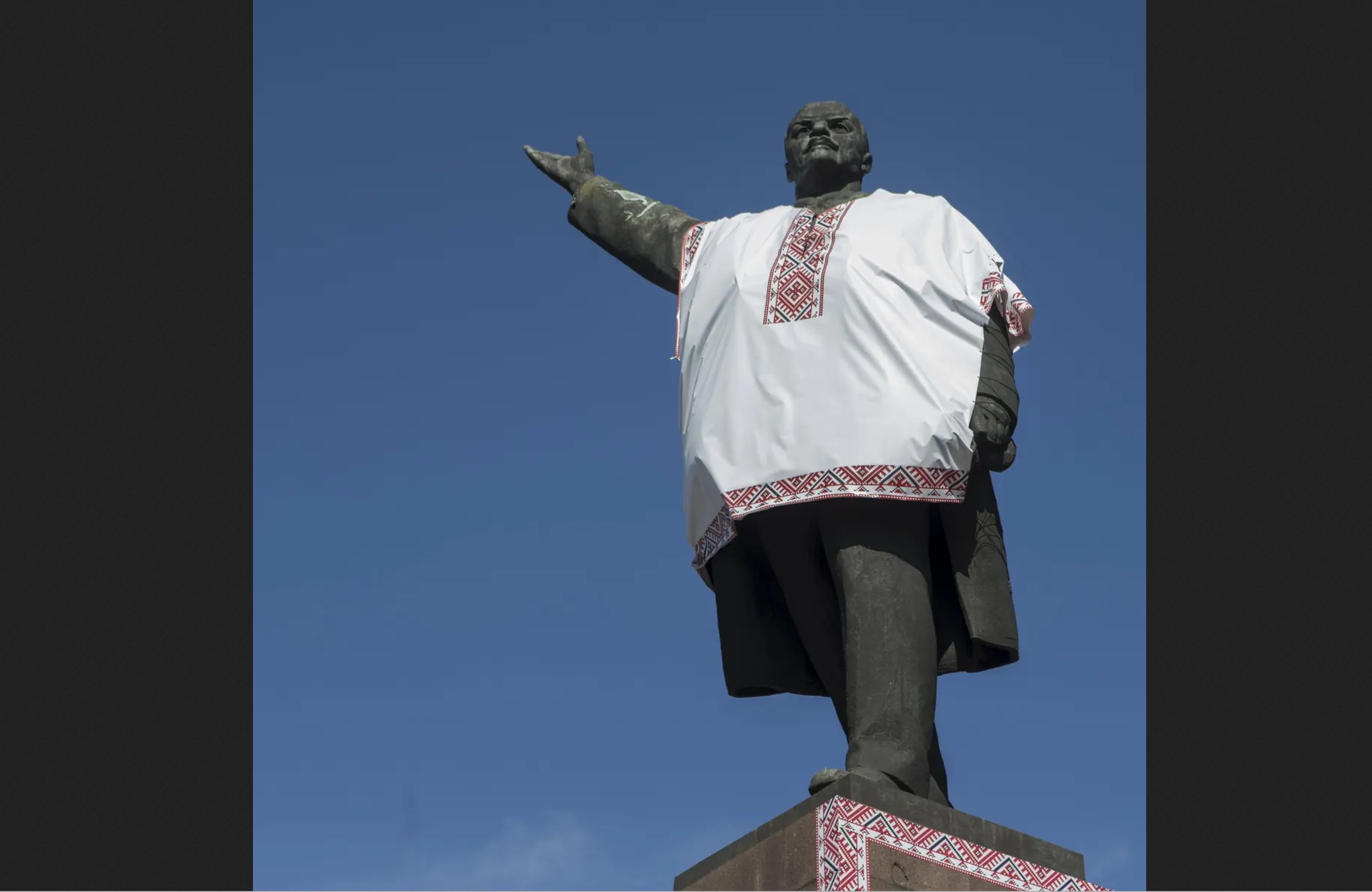
"Ukraine named after Lenin"
With less than three days left before the start of the so-called special military operation, Vladimir Putin addressed the Russians with a speech about recognizing the independence of the proclaimed separatist republics of Donbass. True, he said little about these republics, the speech almost entirely consisted of fakes about Ukraine. Here is one of the most impressive:
“Modern Ukraine was entirely created by Russia, more precisely, Bolshevik, communist Russia. This process began almost immediately after the revolution of 1917, and Lenin and his comrades-in-arms did this in a very rude way towards Russia itself – by separating, tearing away from it part of its own historical territories. Of course, no one asked about anything to the millions of people who lived there. <…> As a result of the Bolshevik policy, Soviet Ukraine arose, which even today can with good reason be called “Ukraine named after Vladimir Ilyich Lenin”. He is its author and architect.”
In fact, for the first time the Ukrainian Republic was proclaimed in June 1917 by the Central Rada in Kyiv as an autonomy within Russia. In November of the same year, after the Bolshevik coup in Russia, the Ukrainian People's Republic was proclaimed. Formally, it was in federal relations with Russia, but the Bolsheviks did not control it, and it did not recognize the Bolshevik government in Petrograd. With the Bolshevik Soviets that appeared a little later, claiming to be the center of power, the republic was in conflict relations. In January of the following year, Ukraine was occupied by Germany, the Verkhovna Rada was dispersed. After the defeat of Germany in the First World War, the UNR was restored, its central body, the Directory, was first headed by Volodymyr Vynnichenko and then Symon Petliura. At the same time, the Bolshevik Provisional Workers' and Peasants' Government of the Ukraine was created in Moscow; his formations launched an offensive and captured a significant part of Ukraine. Later, the UNR troops, taking advantage of the offensive of the White Guard Armed Forces of the South of Russia under the command of Anton Denikin, occupied Kyiv, but were driven out from there by the White Guards, who did not recognize the idea of Ukrainian statehood. As a result, Ukraine was completely captured by the Bolsheviks.
Thus, "Ukraine named after Lenin" appeared as a result of an armed seizure of power by proteges of the Moscow Bolshevik government, and the Ukrainian state already existed at that time. Of course, it lasted much longer than the UNR destroyed by it, but the declaration of independence in 1991 also became the restoration of continuity with the state destroyed by the Bolsheviks.

Jewish roots of Hitler
In an interview with the Italian television company Mediaset , Russian Foreign Minister Sergei Lavrov, speaking about the so-called denazification of Ukraine, said :
“He [Vladimir Zelensky] puts forward an argument: what kind of Nazism can they have if he is a Jew. I could be wrong, but A. Hitler also had Jewish blood. It means absolutely nothing. The wise Jewish people say that the most ardent anti-Semites are usually Jews. “The family has its black sheep,” as we say.”
Lavrov was referring to the story that appeared during Hitler’s lifetime that the Fuhrer’s grandmother was a servant in a Jewish family from the Austrian city of Graz and gave birth to her master, Frankenberger, who later paid her alimony. The story, apparently, was invented by one of Hitler's close associates, Hans Frank, who was executed by the verdict of the Nuremberg Tribunal; she is mentioned in his memoirs published after the war.
Historian Alexander Klinge, author of the book "10 Myths about Hitler", found out that there was no Frankenberger family in Graz in those years, and the payment of alimony was not practiced in Austria at that time. Hitler did not really advertise his origin, but it is more likely that he did not hide Jewish roots, but incest: most likely, his mother was his father's niece.
Later, the office of Israeli Prime Minister Naftali Bennett reported that in a telephone conversation with the Prime Minister, Putin apologized for the words of his minister. The Russian side has not made any public statements on this matter.
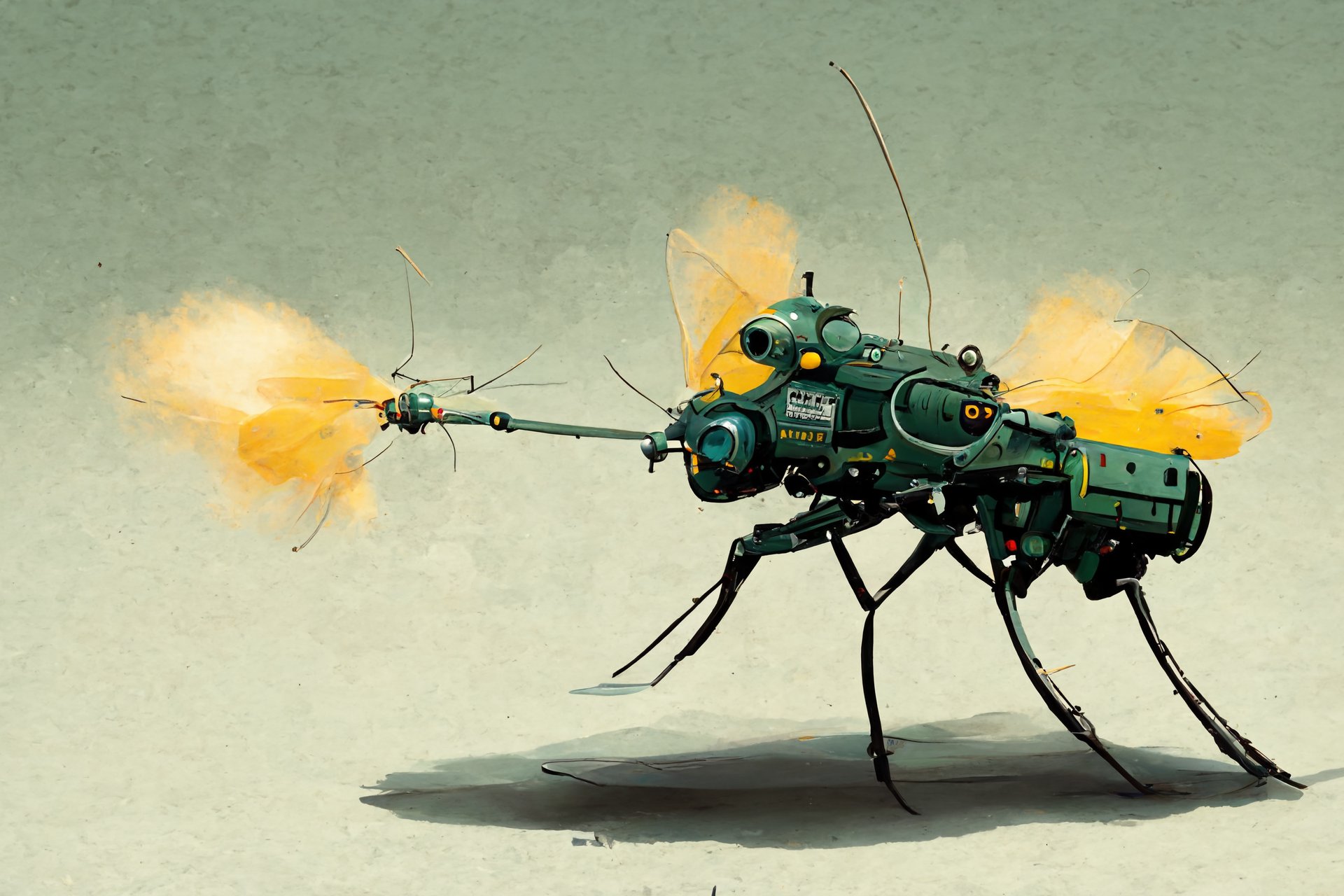
From combat worms to combat mosquitoes
Even before the war, Kremlin propagandists invented fantastic stories about the fact that the United States had created secret laboratories in Ukraine where they worked on biological weapons, but during the war, their imagination reached unprecedented heights. In March, Lieutenant-General Igor Kirillov, head of the Radiation, Chemical and Biological Defense Forces of the RF Armed Forces, said that a leak of a strain from such a laboratory in Kherson in 2019 caused an outbreak of dirofilariasis, an infection of the human body with parasitic worms, a type of worm. True, he did not take into account that, as a biological weapon, the causative agent of dirofilariasis is absolutely unpromising: this disease has an incubation period of about six months, and it almost never causes any harm, except for unpleasant sensations, to a person. They are usually infected with dirofilariasis through mosquito bites, to which the larvae usually get from domestic dogs.
In April, Kirillov reported on experiments on patients in the Kharkov psychiatric hospital, which were carried out in a biological laboratory in the city of Merefa. But the laboratory never existed there. In 2013, plans were announced to set up an animal infectious disease laboratory there, but this caused such a wave of protest that the plans were abandoned.
In May, Kremlin media reported that Canadian General Trevor Kadieu, head of a military biological laboratory allegedly deployed at the Azovstal plant and working with deadly viruses, was taken prisoner in Mariupol. There really was such a general in the Canadian army, he was even appointed commander of the ground forces, but he never took office and was forced to resign due to allegations of sexual harassment. After that, in April, he volunteered for the war in Ukraine. True, by the time he was dismissed from the Canadian army, Mariupol was already completely blocked and it was completely incomprehensible how he could get into the besieged city. And most importantly: the combat officer Kadjo, who participated in the hostilities in Bosnia and Afghanistan, and later led the strategic headquarters, never had anything to do with biological laboratories. In June Kadio returned to Canada.
In October, Russian Ambassador to the UN Vasily Nebenzya returned to the topic of combat mosquitoes and said that the United States has a patented drone that can carry insects infected with a dangerous virus. And this time he did not lie: such a patent exists and is in the public domain. Nebenzya was not embarrassed by the fact that for some reason the American authorities did not classify the patent. But the fact is that in the USA, in order to patent something, it is enough to prove that the idea or design has not been patented by someone before. This is used by jokers who, having paid a small fee, patent completely absurd inventions. One of these "inventors", hiding under the pseudonym Calvert S. Mill, created the "mosquito drone"; he also owns such outstanding inventions as a gun that sticks glue in the eyes, a bullet that causes a stroke, and foam to immobilize robots.
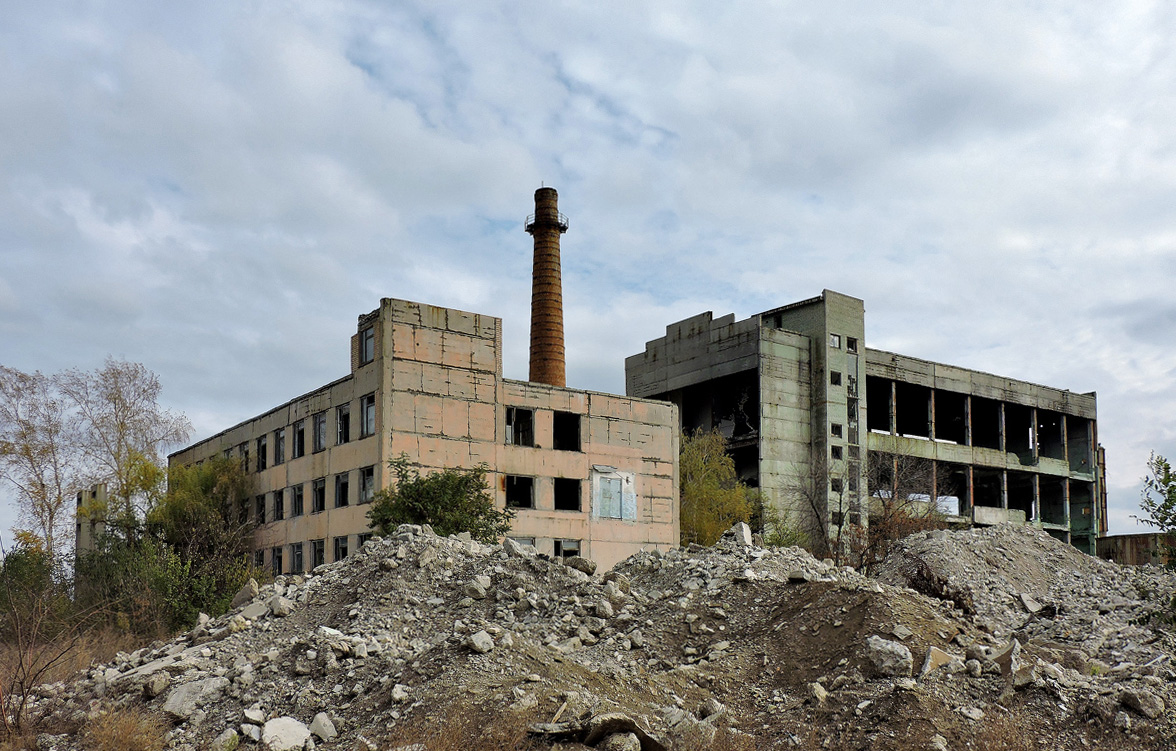
Provocation at the demolished chemical plant
In April, the representative of the Ministry of Defense, Igor Konashenkov, who put the production of fakes on stream, reported on a “major provocation” being prepared by the Ukrainian special services using poisonous substances at the Khimprom plant in Pervomaisk, Kharkiv region: a storage facility with 120 tons of chlorine was mined there in order to blow it up and accuse it of this Russia.
The dreamers from the Ministry of Defense were let down by the fact that the Khimprom plant exists only on headquarters maps, which, apparently, have not been updated for a long time. It was demolished in 2013. Satellite images from Google and Yandex show that there is nothing left at the site of the former workshops, and you can also find a video from 2013 on the network that shows the explosion of one of the factory buildings. Even the railroad tracks that once led to the plant have been dismantled. There is, of course, no storage of chlorine there and cannot be.

Diuretic combat drug
In May, TASS circulated a statement by a captured fighter of the Ukrainian Donbass battalion, who said that the Ukrainian military was drugged with special drugs, from which they lost fear and lowered their pain threshold. He also gave the name of one of these drugs: theofidrin. The next day, Deputy Chairman of the State Duma Committee on CIS Affairs, Eurasian Integration and Relations with Compatriots Viktor Vodolatsky already stated that he himself “saw 300 grams and more special drugs in the backpacks of the dead nationalists, especially a lot of them from Azov”.
But there is no theofidrin. There is theofedrin, an anti-asthma drug produced both in Ukraine and in Russia, which relaxes the smooth muscle lining of the bronchi. In addition, this remedy has a stimulating effect on the heart muscle, increases coronary blood flow and gives a mild diuretic effect. The latter in battle, according to the logic of the TASS interlocutor, is probably especially necessary.
It is known that in the 20th century, narcotic drugs, in particular, amphetamine, were used in the armies of different states to increase the tone and efficiency of soldiers, and relieve fatigue. But as for some special rage caused by substances, it is possible that the authors of the fake were influenced by an unconfirmed version of the fly agaric, which made the Old Norse berserkers berserk in battle.

Dramatization for Western journalists in Bucha
In May, Vladimir Putin's press secretary Dmitry Peskov said :
“The most terrible thing, probably, is what we saw in terms of this monstrous information war – these are streams of lies, these are fakes, these are stagings, sometimes as monstrous as human consciousness cannot imagine. I have in mind, for example, the masterfully bloodthirsty dramatization in Bucha near Kyiv. It is clear that Ukrainian specialists could hardly work so highly professionally, they have an army of companies, PR companies, television people, information advisers, information warfare specialists working for them.”
And he is right about one thing: Ukrainian specialists could not carry out such a staging on their own. And not their own either – no one could at all. The dead people have been identified. Satellite images prove that the bodies of the murdered residents of Bucha appeared on the streets as early as mid-March, and the city was liberated from Russian occupation on April 1.
Pro-Kremlin bloggers and media tried to present evidence that the shooting was staged. In one of the video clips, it seemed that one of the corpses was moving his hand. In fact, such an illusion was created due to the refraction of rays in a drop of water on the glass of the car from which the fragment was taken. In another video, one could allegedly see how corpses were laid out on the road, dragging them on a cable. In fact, it was filmed there how the bodies of the dead were removed from the road, and they had to be dragged on a long cable, because there were fears that they could be mined.
The Frenchman Adrian Boke, who allegedly visited Bucha on a humanitarian mission, said that he "personally saw American cameramen making fake filming from the scene and staging performances." According to him, the bodies of the dead were brought to Bucha from many other places in order to create the appearance of a massacre. But French journalists, based on data on crossing the Polish-Ukrainian border, found that Boke could not get to Bucha in the first days after his release, he simply did not have time for this.
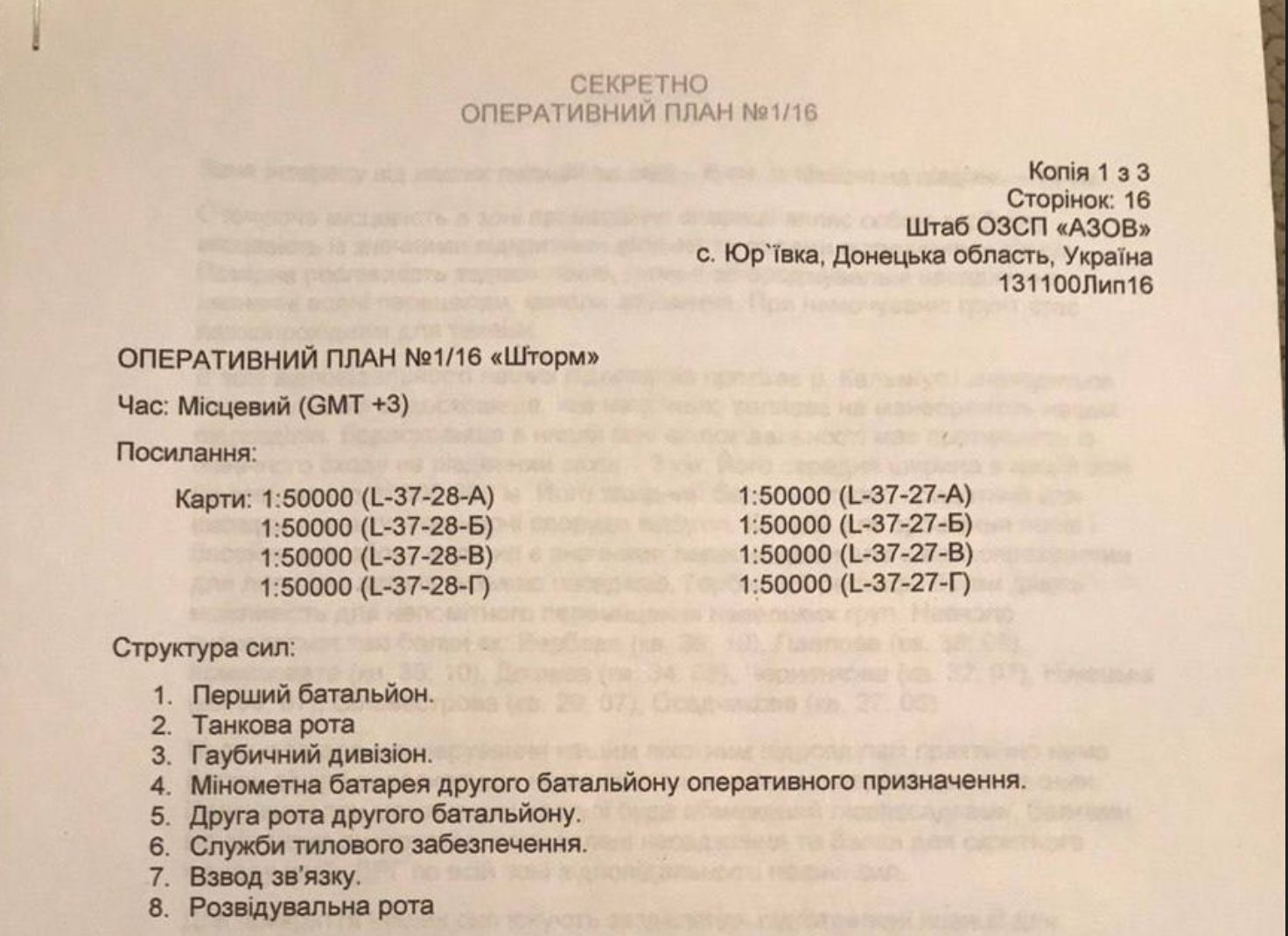
Secret documents on Surzhik
A separate fake genre is the publication of so-called secret documents captured by valiant Russian troops in captured headquarters or obtained by no less valiant patriotic hackers. But unexpected difficulties arose with their production: they must be in Ukrainian, and it turns out that everything is not easy for the propagandists. In June, RIA Novosti published a certain operational plan found in the location of the Azov regiment; the plan prescribed to occupy operational positions in residential buildings. The text was written in Ukrainian, but the authors did not notice that the Russian stamp “secretly” flaunts over it instead of the Ukrainian “taєmno”.
A few days later, Izvestia published a photograph of another Ukrainian “secret document” related to mysterious Ukrainian biological laboratories cooperating with the United States. This time, the authors coped with the “secretly” heading, but other problems arose: it seems that they used a machine translator. "Personal file" was translated into Ukrainian as "special officer on the right", although it should be "special officer on the right." “Specialist on the right” is also a “private matter”, but in a different meaning, something like in the phrase “this does not concern you, this is my private matter.” And the mark on the registration of the document with the SBU looks absolutely enchanting: the address “st. Volodimirska, 33, Kiev. But in Ukrainian, a street is a street, and a city is mysto, so it would be necessary to write “vul. Volodymyrska, m. Kiev.
In December, Rossiyskaya Gazeta published a document allegedly obtained by hackers; it was a secret letter from the head of the Personnel Center of the Armed Forces of Ukraine to the chief of the General Staff with information about the number of dead Ukrainian soldiers who are officially missing. The figures there were absolutely fantastic, but the Ukrainian language is quite correct. And only in one place the producers of the document made a mistake: they did not notice that in the requisites of the letter in the indication of the date there is a Russian preposition “from” instead of the Ukrainian “vid”. In addition, they got confused in the rules of document circulation and printed their fake on the letterhead of the wrong department.
But propagandists are trying to forge not only secret documents. In September, Rossiyskaya Gazeta published a photo purporting to be taken at a Ukrainian school of a stand with a memo for students to tell the teacher if their parents speak Russian at home, watch Russian TV channels, or curse Zelensky. The creator of this fake is hopelessly confused in Ukrainian grammar: he invents a form of the imperative mood of the verb “rozpoisti” (to tell), although he does not have such a form, and inflects the word “vchitelka” (teacher) according to the rules of the Russian language. The next day, an edited version began to be distributed in social networks, where these errors were corrected, but for some reason new ones were made, correcting what was correct in the first version.

The sinking of a decommissioned ship
Perhaps the fate of the sunken flagship of the Russian Black Sea Fleet, the cruiser Moskva, haunted the propagandists for a long time, and two months later they avenged him. In June, TASS and many other media reported on another "victory" of the Russian army: the Vinnitsa corvette, which was defending the city of Ochakov, was sunk in the Dnieper-Bugsky estuary. The article is illustrated with a video, where the corvette rolled on its side and its tail number are clearly visible.
That's just "Vinnitsa" did not defend anything. In January 2021, the 1975-built corvette was decommissioned and awaiting its fate: it could either be turned into a museum or cut into scrap metal. Employees of Izvestia could have found out about this if they had not been too lazy to look at Wikipedia. But instead, they wrote that the ship was decommissioned either in the US or in the UK and then delivered to Ukraine, although in fact it was built at the Gorky shipyard in Zelenodolsk.

Sale of a brand new French self-propelled guns to the enemy
At the end of June, the Kremlin media reported another big success: Russian troops captured two French Caesar self-propelled artillery mounts that had just been transferred to Ukraine. Whole and unharmed. At the same time, they referred to a tweet of a little-known French left politician Régis de Castelnau. It was reported that the self-propelled guns were delivered to Uralvagonzavod for study, and even a video appeared on YouTube announcing this achievement. True, it was edited from the frames of the video of the Armed Forces of Ukraine; there was not a single picture with self-propelled guns that got into Russia. The only source of information was a tweet by de Castelnau, who did not say a word about where he got the information, but instead used it as an excuse to criticize the French authorities for their support of Ukraine.
But that was just a prelude. A week later, Kremlin propagandists wrote how the self-propelled guns fell into the hands of the Russians. It turned out that the Ukrainian military simply sold them to the enemy for $120,000 apiece. Actually, Caesar is worth about $7 million, but apparently the money was badly needed. The source of information this time turned out to be a blog called Bulgarian Military . And his only source… the same old Régis de Castelnau tweet. True, he did not write anything about the sale, but the Bulgarian blogger attracted an expert, a German professor, and he said:
“The end of the comment – ‘Thank you, Macron, we pay’ – suggests that Régis de Castelnau believes that the two howitzers were not abandoned and therefore captured, but sold. The irony in this particular case is too strong to ignore this fact.
How it follows from this phrase that the Ukrainians sold the self-propelled guns to the enemy is impossible to understand, but the Berlin professor knows better. By the way, he is an expert on climate change policy. He believes that there was a sale with the help of an intermediary, a military dealer. The professor has no evidence, but he "refers to the considerations expressed in the circles to which he belongs." To what circles the climate policy researcher belongs is anyone's guess.
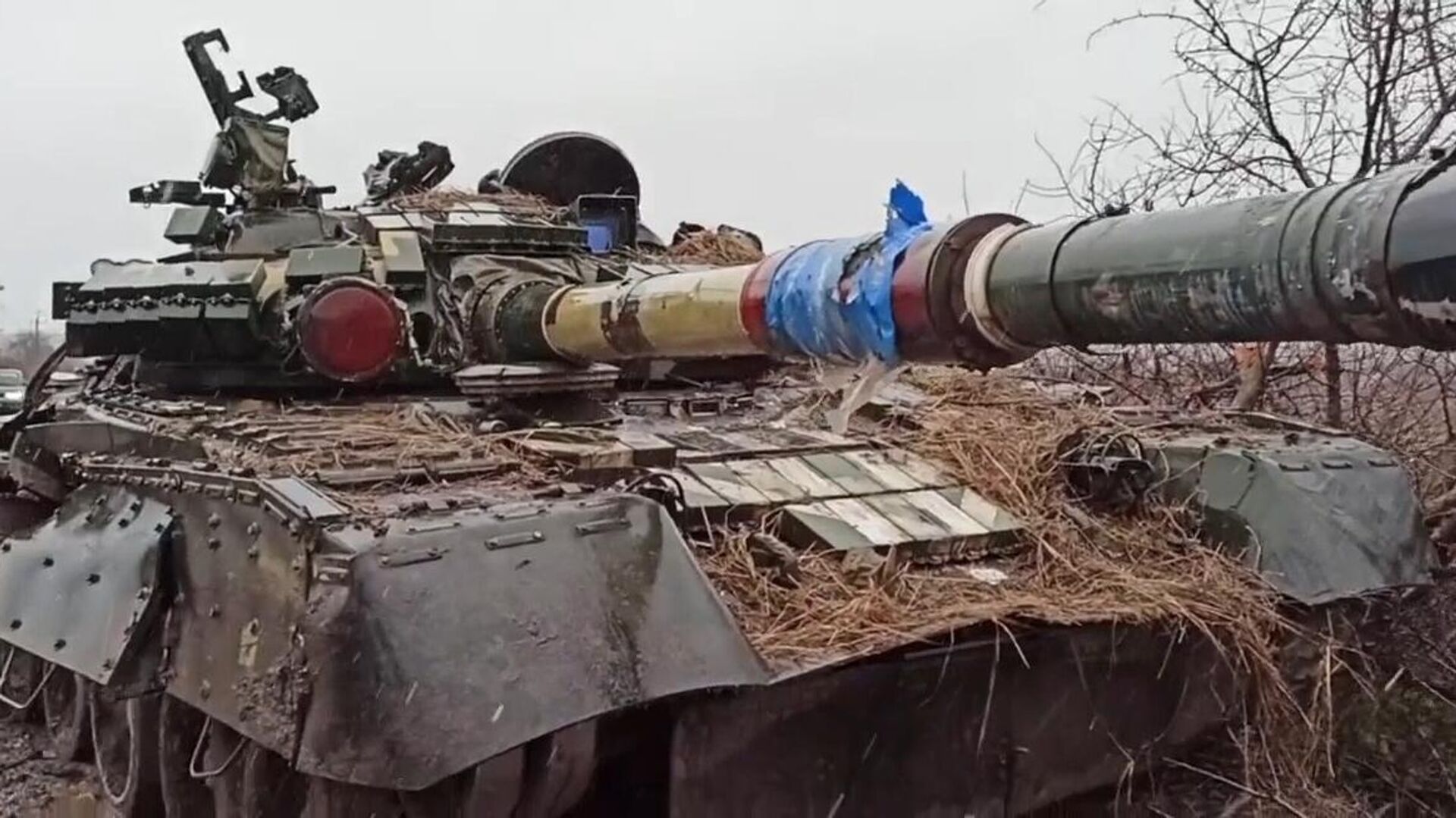
Kamikaze tankers with welded hatches
In December, RIA Novosti published an article under the heading “A scout told how the Ukrainian soldiers brewed in tanks surrender.” He told this:
“Ukrainian tankers, who were blocked from the outside in their own tanks, slowly go to surrender, turning away the gun, and then tap the SOS signal from the inside on the armor. <…> That is, everything was done so that the crew could not leave the car. They forcibly made suicide bombers out of them. But they also want to live. <…> They turn the turret (with a cannon. – Ed.) back, slowly drive to our position and stop, turn off the engine. Shouts and blows are heard from the tank. Basically, they hit three short ones – three long ones – three short ones, that is, an SOS signal. Our technicians are getting them out of there."
The authors' flight of fancy turned out to be so high that even the observers of the completely pro-Kremlin "Military Review" could not stand it. They explained that it was hardly possible to weld a tank hatch in the field, armor can be welded with great difficulty. In addition, the tank also has a hatch in the bottom, and in order to gain access to it, the tank must be driven onto a flyover. In addition, the tank needs maintenance and replenishment of ammunition, which is impossible if it is brewed, and the crew must have something to eat. And turning an expensive tank into a disposable car is somehow completely stupid. The story of how the Russian military unblocks a welded tank with a "Bulgarian" is completely fantastic: where, interestingly, did the "Bulgarian" come from in the trenches? And finally, the behavior of the crew, which humbly waits until it is brewed, and after that goes to surrender, cannot be explained by anything.


